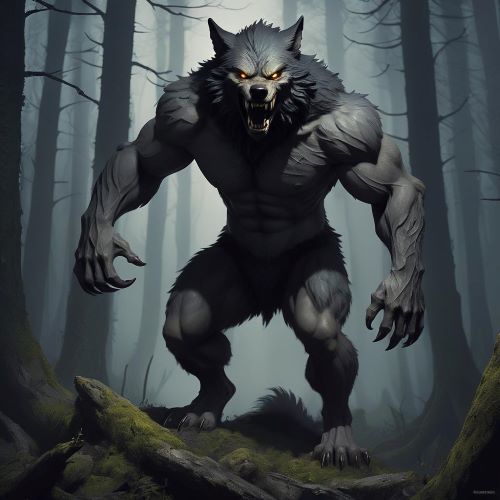Central European Hybrids
Central European mythology is home to a fascinating array of hybrid creatures, collectively referred to as Central European Hybrids. These mythical beings, often combinations of humans and animals or a mix of multiple creatures, play pivotal roles in the folklore and legends of the region. Whether they are feared for their strength and unpredictability or revered for their wisdom and supernatural abilities, these hybrids embody the complexities of nature and the supernatural. They often represent both the wonders and dangers of the unknown, offering insight into the fears, hopes, and values of Central European societies.
One of the most famous Central European Hybrids is the basilisk, a creature known for its deadly gaze and toxic breath. The basilisk, part serpent and part rooster, is a symbol of danger and death in Central European legends. Its ability to kill with just a glance made it a feared creature, often associated with the protection of treasures or as a representation of plague and destruction. This hybrid creature reflects the region’s historical struggles with disease and conflict, using mythology to personify these challenges in a tangible form.
Another notable hybrid is the centaur-like leshy from Slavic mythology, a protector of the forests who could shift between human and animal forms. The leshy was often depicted as a guardian of nature, sometimes helping those who respected the wilderness while punishing those who did not. The idea of hybrids like the leshy reflects the deep connection Central Europeans had with nature, as well as the belief that the natural world was full of spirits and forces beyond human control. These hybrids were seen as the mediators between humanity and the wild, embodying both its beauty and its unpredictability.
Central European Hybrids also appear in tales of monstrous creatures, such as the werewolf. A man cursed to transform into a wolf during the full moon, the werewolf represents themes of duality and inner conflict, as well as the fear of losing control over one’s own nature. The werewolf is a common hybrid character in Central European folklore, reflecting anxieties about human instincts and the thin line between civilization and savagery. Stories of werewolves often contain moral lessons about restraint, responsibility, and the consequences of giving in to base desires.
The mythology of Central European Hybrids continues to influence modern culture, from literature and art to films and video games. These creatures, with their blend of human and animal traits, remain fascinating to contemporary audiences. Their symbolic roles as guardians, monsters, or enigmas make them compelling figures that continue to be reinterpreted in various forms of media. As these hybrid creatures evolve in popular culture, they maintain their connection to the folklore from which they originated, keeping Central European mythology alive and relevant in modern times.
Central European mythology is home to a fascinating array of hybrid creatures, collectively referred to as Central European Hybrids. These mythical beings, often combinations of humans and animals or a mix of multiple creatures, play pivotal roles in the folklore and legends of the region. Whether they are feared for their strength and unpredictability or revered for their wisdom and supernatural abilities, these hybrids embody the complexities of nature and the supernatural. They often represent both the wonders and dangers of the unknown, offering insight into the fears, hopes, and values of Central European societies.
One of the most famous Central European Hybrids is the basilisk, a creature known for its deadly gaze and toxic breath. The basilisk, part serpent and part rooster, is a symbol of danger and death in Central European legends. Its ability to kill with just a glance made it a feared creature, often associated with the protection of treasures or as a representation of plague and destruction. This hybrid creature reflects the region’s historical struggles with disease and conflict, using mythology to personify these challenges in a tangible form.
Another notable hybrid is the centaur-like leshy from Slavic mythology, a protector of the forests who could shift between human and animal forms. The leshy was often depicted as a guardian of nature, sometimes helping those who respected the wilderness while punishing those who did not. The idea of hybrids like the leshy reflects the deep connection Central Europeans had with nature, as well as the belief that the natural world was full of spirits and forces beyond human control. These hybrids were seen as the mediators between humanity and the wild, embodying both its beauty and its unpredictability.
Central European Hybrids also appear in tales of monstrous creatures, such as the werewolf. A man cursed to transform into a wolf during the full moon, the werewolf represents themes of duality and inner conflict, as well as the fear of losing control over one’s own nature. The werewolf is a common hybrid character in Central European folklore, reflecting anxieties about human instincts and the thin line between civilization and savagery. Stories of werewolves often contain moral lessons about restraint, responsibility, and the consequences of giving in to base desires.
The mythology of Central European Hybrids continues to influence modern culture, from literature and art to films and video games. These creatures, with their blend of human and animal traits, remain fascinating to contemporary audiences. Their symbolic roles as guardians, monsters, or enigmas make them compelling figures that continue to be reinterpreted in various forms of media. As these hybrid creatures evolve in popular culture, they maintain their connection to the folklore from which they originated, keeping Central European mythology alive and relevant in modern times.

